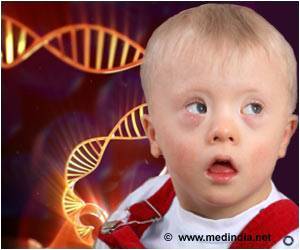An international team of researchers has found a single-letter change in the genetic code that is linked with autism.
An international team of researchers has found a single-letter change in the genetic code that is linked with autism. The team includes an Indian origin scientist.
The finding implicates a neuronal gene not previously tied to the disorder and more broadly, underscores a role for common DNA variation.In addition, the new research highlights two other regions of the genome, which are likely to contain rare genetic differences that may also influence autism risk.
"These discoveries are an important step forward, but just one of many that are needed to fully dissect the complex genetics of this disorder. The genomic regions we've identified help shed additional light on the biology of autism and point to areas that should be prioritized for further study, " Nature quoted Mark Daly, at the Broad Institute of Harvard and MIT, as saying.
"The biggest challenge to finding the genes that contribute to autism is having a large and well studied group of patients and their family members, both for primary discovery of genes and to test and verify the discovery candidates," said Aravinda Chakravarti, at the McKusick-Nathans Institute of Genetic Medicine at Johns Hopkins.
Autism is a common neurodevelopmental disorder characterized by impaired social, behavioural and communication abilities.
To more deeply probe autism's complex genetic architecture, researchers in a large multinational collaboration, devised a two-pronged, genome-scale approach.
The second harnesses a population-based method (known as "association") that examines DNA from unrelated individuals and can expose common genetic variants associated with autism and which tend to exert more modest effects.
For their initial studies, the researchers examined roughly half a million genetic markers in more than 1,000 families from the Autism Genetic Resource Exchange (AGRE) and the US National Institute of Mental Health (NIMH) repositories.
Their results highlight three regions of the human genome, which include parts of chromosomes 6 and 20, the top-scoring regions to emerge from the family-based linkage studies.
The other major result is a single-letter change in the genetic code known as a single nucleotide polymorphism, or SNP (pronounced "snip").
This common variant lies on chromosome 5 near a gene known as semaphorin 5A, which is thought to help guide the growth of neurons and their long projections called axons.
Notably, the activity or "expression" of this gene appears to be reduced in the brains of autism patients compared to those without the disorder.
The study has been published in the latest issue of the journal Nature.
Source-ANI
RAS
 MEDINDIA
MEDINDIA



 Email
Email








